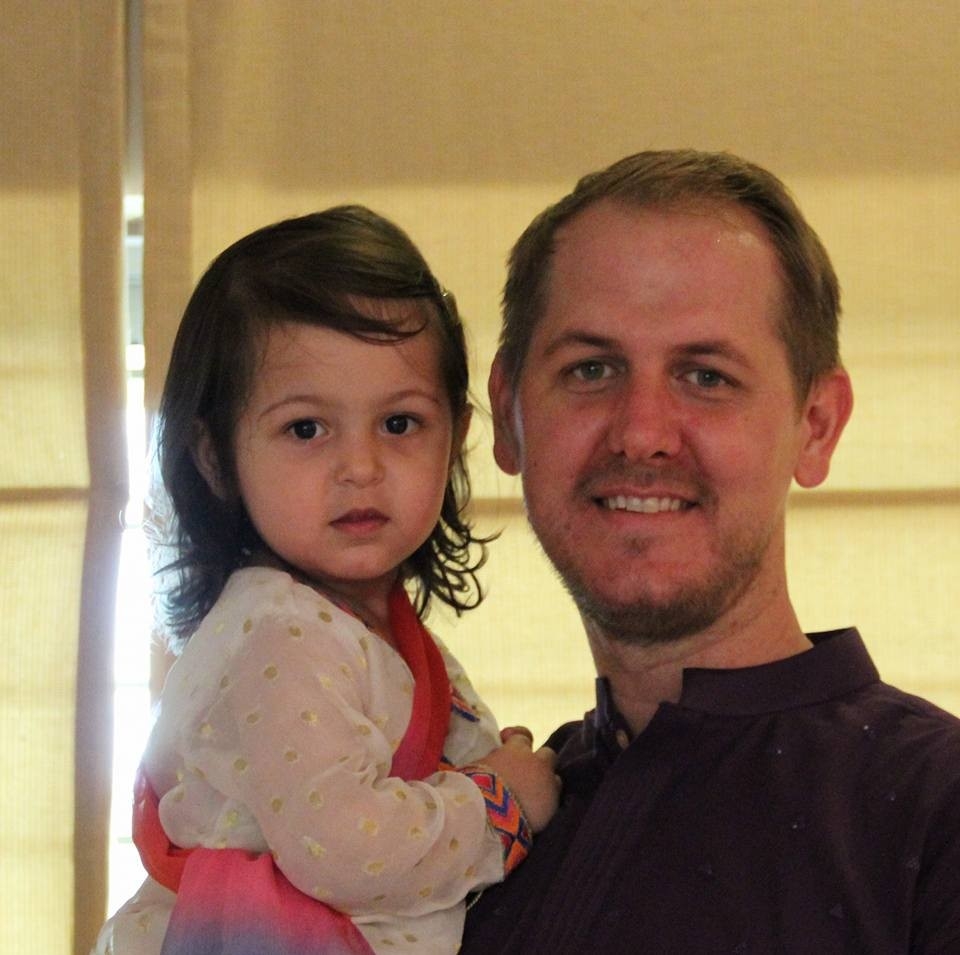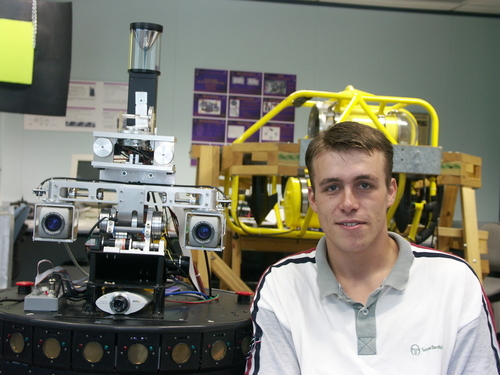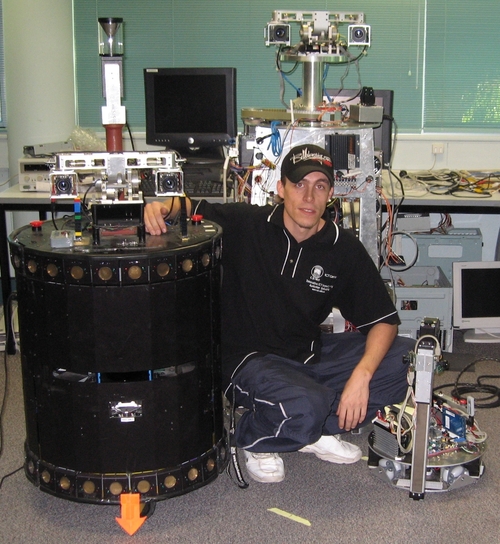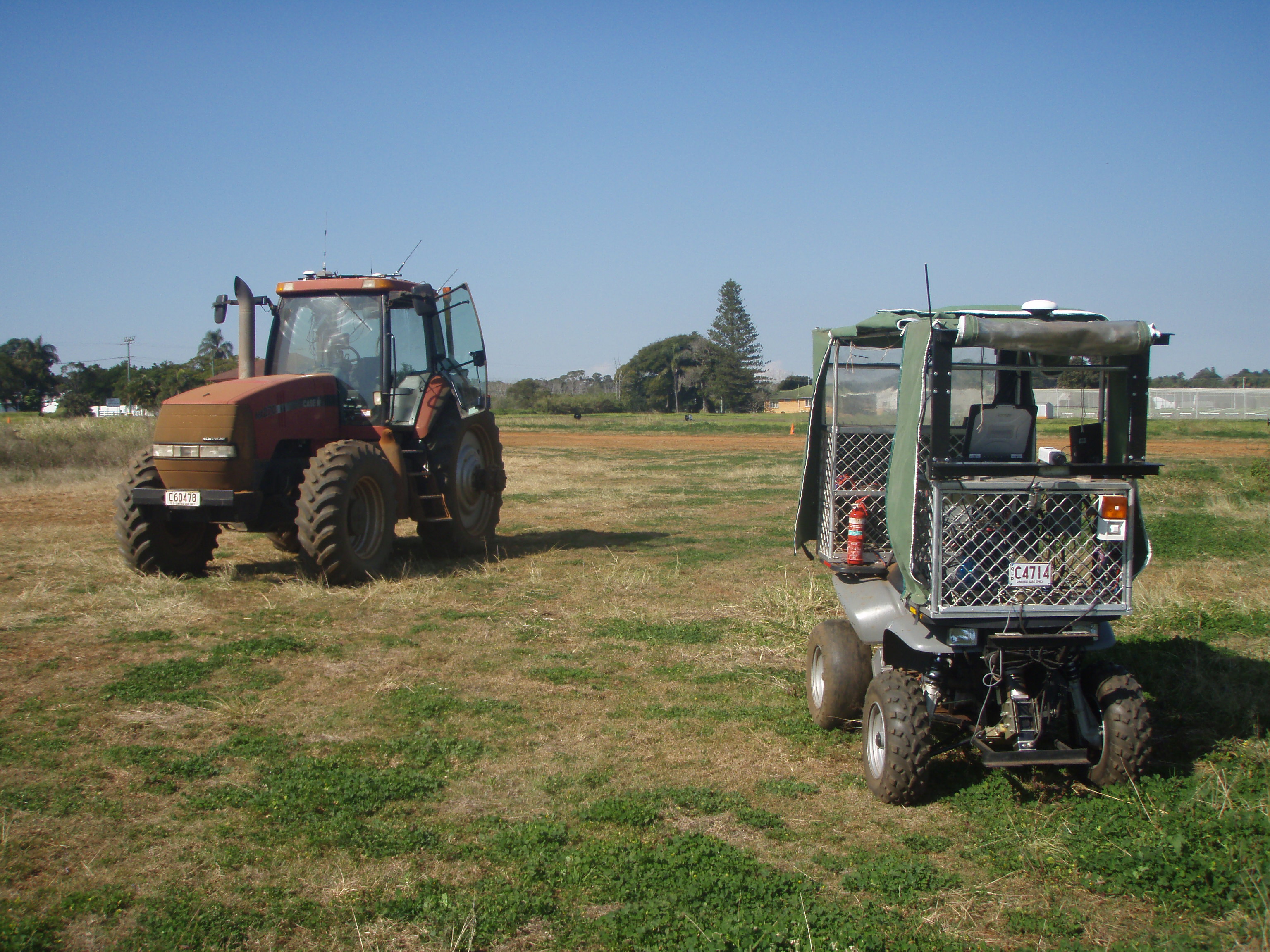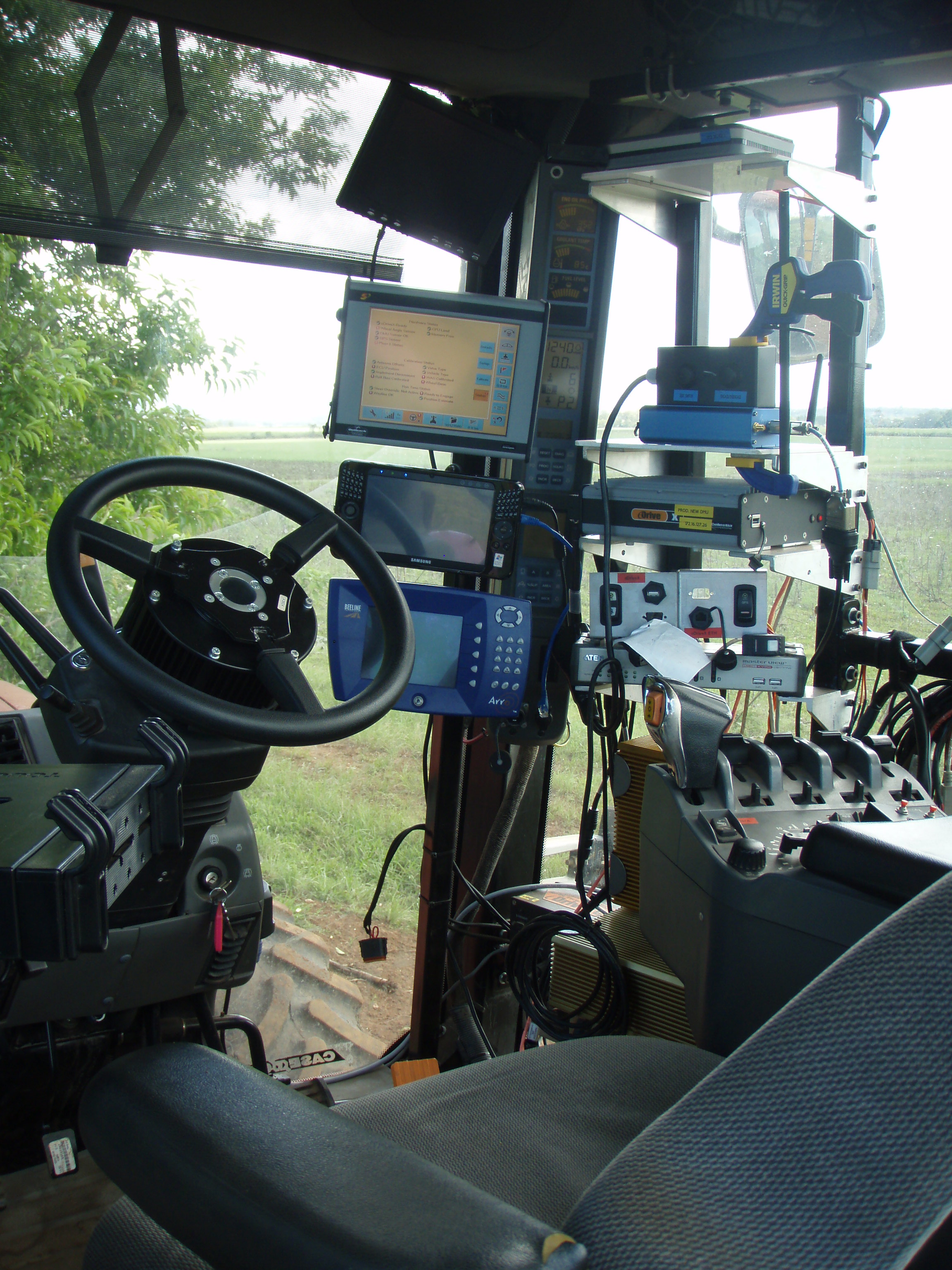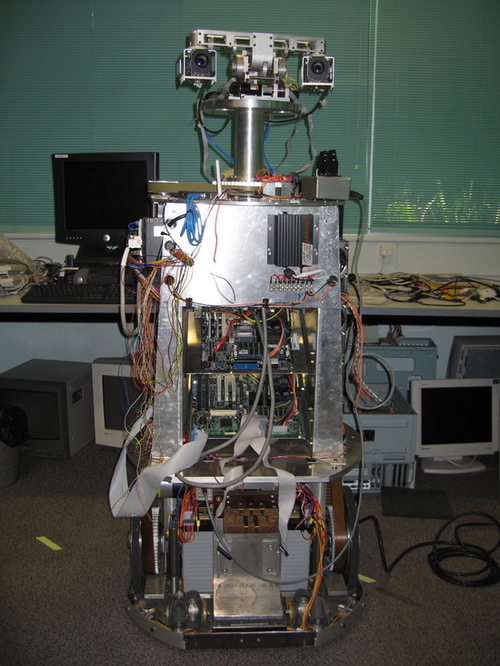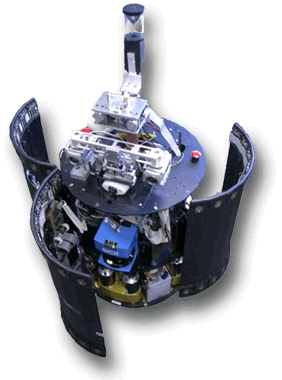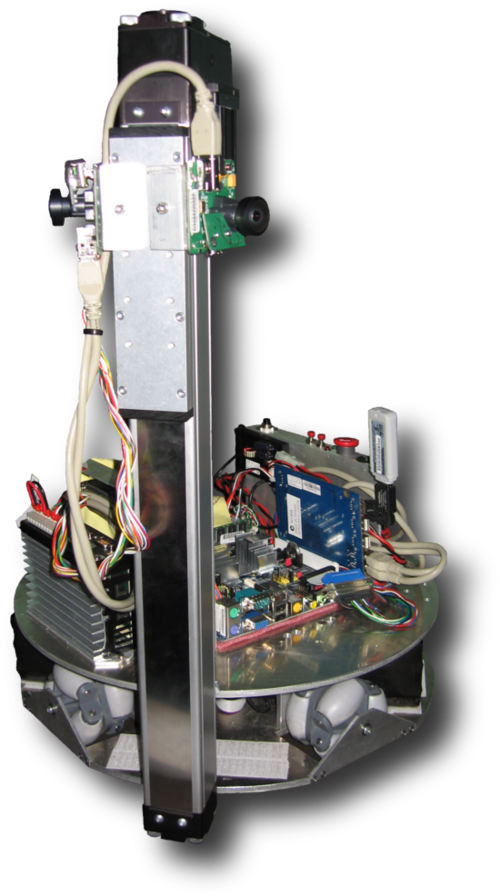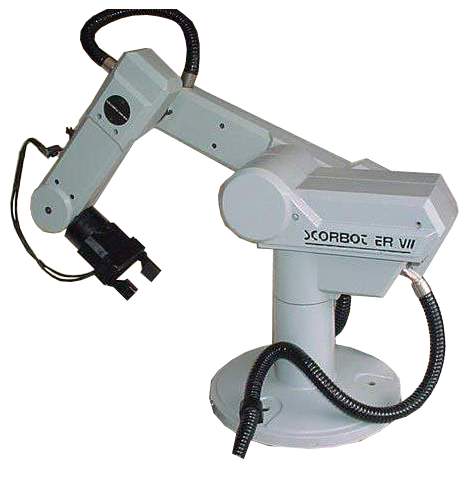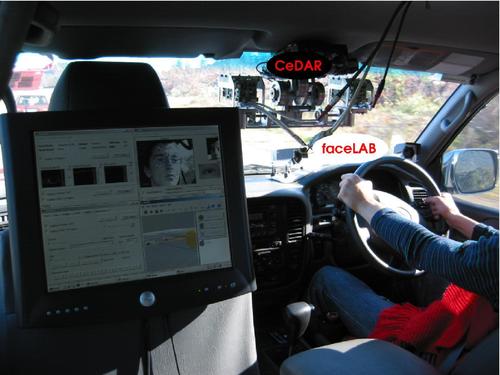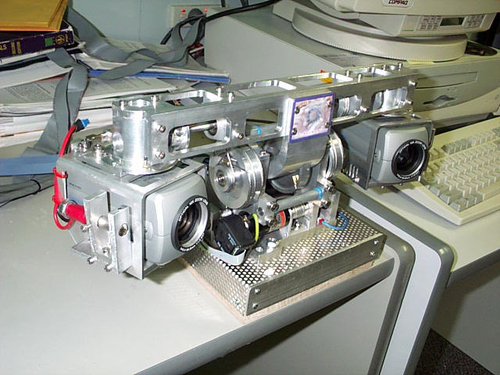Our CTO (Luke Cole) previously worked for Hemisphere GPS (orginally called BEELINE, and now bought out by AgJunction) as a "Robotics Engineer" implementing auto-guidance solutions for various quadbikes and agriculture tractors that was used by 100's of vehicles around the world.
For 10 years, starting as a teenager in 1998 - Luke Cole has also worked for leading research institutes and companies such as NICTA (now called CSIRO Data61), CSIRO, Seeing Machines and ANU Robotics System Lab (lead by Alex Zelinsky, who received a rare prestigious AO award in 2017 and was Defence Scientist of Australia from 2012 for 6 years). Luke's worked included various autonomous mobile robot projects, involving computer vision, and even a self-driving car early 2000's. Back then OpenCV and ROS didn't exist, so we did a "roll-your-own" called VisLib and DROS comprised of 364,578 lines of code.
Lance Cole has also worked at NICTA and has a background of various hardware development, such as working for a contract company to the US millary (EOS), building the Common Remotely Operated Weapon Station (CROWS).
We have a long-standing robotics experience - our engineers offering Robotics Prototyping for Winnellie, robot development and robotics custom software services have something like a combined 50 years worth of experience in the robotics field, from teleoperated and semi-autonomous mobile robotic applications, to custom software and/or custom hardware for general automation solutions, signal processing and control systems. Our knowledge base started in NSW and ACT, but now we primarily service East Coast Queensland.
We have developed autonomous mobile robots for air, underwater and ground. Our professional experience started with developing various control and sensor systems for small underwater vehicles in the late 1990's. We where fortunate enough to have been involved in one of the first self-driving car R&D projects back in early 2000's using a 4WD (to support computers for the large processing requirements). For an overseas client we developed a low profile (70mm high) semi-autonomous mobile robot platform for manikin/dummy mounting to simulate people moving (for vehicle crash safety and collision development by German R&D car manufactures). We have been fortunate enough to have been invited to the bulk of the German R&D car manufactures where they develop and test self-driving and driver assist development systems. We have developed various solutions for 2cm accuracy precision steering-guidance solutions for various types of Agriculture tractors (via the CAN bus and ad-hoc methods), which are still used by 1000's of tractors all over the world. We have retro fitted Quadbikes to allow semi-autonomous control via GPS way points. We have custom developed various indoor mobile robotics for indoor localistion and SLAM R&D purposes.
Robot navigation is the task where an autonomous robot moves safely from one location to another. This involves three primary questions:
- “Where am I?” which is known as robotic localisation (hard).
- “Where am I going?” which is known as goal recognition (typically provided by a human).
- “How do I get there without collisions?” - path planning (easy) and obstacle avoidance (hard).
For robotic localisation and obstacle avoidance we use sensors to solve the problem. To move along the planned path, we use control systems.
We have a deep understanding of signal processing and sensors of various types. We appreciate sensing is a hard problem. There is no one-size-fits all solution. Odemetry (wheel encoders) provide a cost-effective method to measure relative position. however suffer from wheel slip and errors are accumlate over time. GPS only works outdoors, effected by trees/buildings, and without a nearby basestation (for expensive DGPS/RTK) the absolute position error is several meters. IMU (accelerometers + gyros + Magnetometer) suffer from drift errors and noise error causing ``random walk'' when integrated. Magnetometer are effected by magnets, are slow to respond and measure magnetic north (not true north). Infrared are cost-effective, but short range and saturated by sunlight. Ultrasonic range sensors are cost-effective and good for detecting large objects, but can't detect glass/water, only measure a few metres, have a wide beam and provide medium accuracy. RADAR uses radio (instead of sound) to detect objects at long distance, but are relative more expensive then ultrasonic range sensors. Image sensors (video cameras) are a cost-effective, rich in information, and two or more can get depth information, but are computationally expensive, hard to process the data (aka computer vision), affected by dust/fog/rain, and light variations. LIDAR are high accuracy (about 1mm), however are expensive (prices are coming down every year), but can't detect glass/water. Distance measurement sensors are easy to interpret, other sensors are hard. Colour constancy and object classification is very hard (e.g. “Is it a tree or a human?”).
We have a deep understanding of control systems. We typically use Linux-based SBC's and a program a custom PID controller - perhaps even a cascade PID controller, bayesian filters, particle filters, kalman filters, Monte Carlo methods, or train a deep neutral network. The outputs of these systems might control various types of motors (e.g. brushed, brushless, servo, steppers) and/or various types of actuators (e.g. linear, pneumatic, hydraulic), and/or other things like lights or speakers.
We have been involved with computer vision and machine vision since early 2000's - we where involved in the development of two computer vision libraries before OpenCV became popular. Have done much biologically inspired techniques such as optical flow. Was involved in the early days of artificial intelligence using techniques such as Local Binary Patterns (LBP) and Haar-like features (HAAR). These days we typically use machine learning methods such as designing and training deep neural networks (outstanding for vision-based object recognition using ImageNet).
We where involved in the development of a robotic operating system which had 364,578 lines of code, before ROS was written.
We have developed custom software for various manipulators, and have a good understanding of forward and inverse kinematics.
We appreciate that challenges with robotics - particularly with robot navigation, computer/machine vision, and manipulation with the real-world, in real-time using real-robots.
Whilw we can custom develop robot navigation solutions. We can fast-track robot navigation solutions for ground, air and water based platforms via off-the-shelf autopilots. There are many about these days. Some cost-effective open-source options include Pixhawk 4, PX4, and ArduPilot. Some expensive closed-source options include Auterion Skynode, Tersus AutoSteer, Embention Veronte, Outback eDriveX and Trimble EZ Pilot.
We are confident with a broad range of skills and confident our Robotics Prototyping for Winnellie services can offer solutions such as:
- Autonomous Mobile Robots
- Simultaneous Localisation and Mapping (SLAM)
- Path Planning, Goal Recognition
- Collision Avoidance
- Pattern Recognition
- Object Recognition
- Object Tracking
- Genetic Algorithms
- Neural Networks
- Evolutionary Robotics
- Probabilistic Robotics
- Machine Learning
- Deep Learning
- Optical Flow, Point Clouds
- Stereo Active Vision, Panoramic Cameras, Fisheye Lens/Camera, Log-polar Camera, Time of Flight Cameras, Camera Array
- 3D Reconstruction
- Manipulator, Biped and/or Quadped locomotion
- Sensor Fusion: GPS, LIDAR, IR, Ultrasonic, Vision
- PID Controllers, Cascade Control Loops, Fuzzy Logic
- Bayesian Filters, Particle Filters, Kalman Filters, Monte Carlo Methods
These technologies can be used for various applications such as:
- Lightweight Reconnaissance Vehicle (LRV)
- Remotely operated Underwater Vehicle (ROV)
- Autonomous Underwater Vehicle (AUV)
- Unmanned Aerial Vehicle (UAV)
- Vertical Take-Off and Landing (VTOL)
- Multicopter / Multirotor
- Storm Drain and/or Pipe Inspection Robot
- Traffic Control Robot
- Gardening Robot
- Robot Lawn Mower
- Floor Cleaning Robot
- Home Land Security Robots
- Forklift Automation
- Load Haul Dump Automation
- Agriculture Automation
- Production Line Automation
- Asset Tracking
- Kid Tracking
- Pedestrian Tracking
We also offer a R&D robotic platform UGV for hire to help rapid development of robotics systems. If you'd like to know more please visit "Scotty Robot".
Some of our Robotics Prototyping for Winnellie and Custom Development Experience
Information About Winnellie
Dedicated Support for Local Businesses in Winnellie, Darwin, Northern Territory, Australia
Located in the heart of Winnellie, Darwin, Northern Territory, Australia, COLETEK is a trusted Australian company with a deep understanding of the local business landscape. We're proud to be part of this vibrant community and committed to supporting our neighbors in their entrepreneurial endeavors.
As a long-time resident of Darwin, COLETEK has developed a keen sense of the unique challenges and opportunities that come with operating a business in this region. Our team takes pride in being readily available and accessible to clients across Winnellie and beyond, offering expert guidance and tailored solutions that cater specifically to the needs of local businesses.
With over [X] years of combined experience serving the Northern Territory, our experts have honed their skills working with a diverse range of industries and companies. This depth of knowledge allows us to identify and address the distinctive demands and regulations affecting local businesses in Winnellie, ensuring seamless integration into your existing operations.
COLETEK is not just a national player; we're deeply committed to our local roots. Our team members come from the very community we serve, giving us a unique ability to understand the intricacies of running a business in this part of Australia. We're passionate about empowering entrepreneurs and small-to-medium-sized businesses like yours to thrive and reach their full potential.
Innovative thinking and cutting-edge technology are at the forefront of everything we do. COLETEK's experienced staff stays up-to-date with the latest developments, ensuring that our clients receive the most effective solutions for their specific needs. By embracing innovation, we're able to help local Winnellie businesses adapt to an ever-changing market landscape, giving them a competitive edge in their respective fields.
We don't just stop at technical expertise; we also prioritize building strong relationships with our community partners. As locals ourselves, we recognize the importance of fostering collaboration and mutual support among area businesses. Our dedicated team is always available to provide personalized guidance, share valuable insights, and advocate on behalf of our clients in Winnellie.
Your success matters to us. COLETEK is committed to being a trustworthy partner for your business, and we're proud to be part of this vibrant community. If you're ready to take your entrepreneurial efforts to the next level, partnering with us can make all the difference. And when you are, don't hesitate – Contact Us to start your journey today!
Our Clients



















































































































































Robotics Prototyping for Winnellie – Amazing Customer Testimonials
We engaged COLETEK to conduct a series of research projects on robotics and we very pleased with their technical skill, creative thinking and hard work. If you need to prototype a complex technical idea, they are a great partner to work with.

We met with Luke Cole from COLETEK and very quickly realised that he was very knowledgeable in robotics and prototyping. What separates his company from the rest, is that he had a unique value proposition - COLETEK offers a tele-operated / robotic unit for rent and with the flexibility to be modified to build proof-of-concepts. That unit lowered both the cost and time for us to produce a video showing a very challenging concept. In general COLETEK's service was great value. We would recommend them - they will get it done.

We had the pleasure of doing business with COLETEK who provided us with service work. Their level of service and the quality of their work is exceptional. They communicated with us through the entire process to let us know when the work would be completed. We are very happy to have worked with them.

COLETEK have been absolutely fantastic in their support and manufacture of various components for us. Our designs are always bespoke, intricate and low volume and it’s great to have an Australian company like COLETEK as a trusted and quality manufacturer for our spacecraft mechanical components and assemblies – which have been flight proven through successful mission operations. Keep up the great work!
Great delivery, and great relationship orientated services.
